
__go to HOMEPAGE or here to go to PRODUCTS
Installation Guide for a Solar Panel Indirect Connection
Most traditional Solar Installations use a heat exchanger coil inside the Hot Water Tank.
Whilst this method often requires the
purchase of a specialised twin coil tank, it can be achieved using a
'retrofit' coil which replaces the immersion heater. These secondary coils
can be found on ebay or, for the more adventurous, made at home from spare
materials. In my own tests, an area equivalent to 5 mtrs of 10mm copper
pipe is sufficient to transfer the heat from 40 of the 47mm heat pipes.
The coil does not have to look pretty as you will not be seeing it once it
is installed inside the tank. It should have as much of its effective area
located at the base of the tank for optimum efficiency as this maximises
the heat gradient. 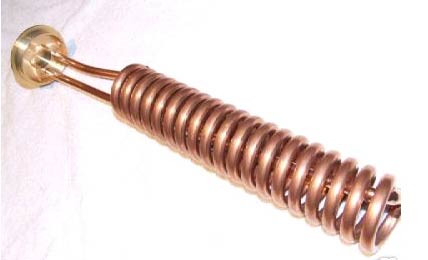
The main benefit of this style of installation over a Direct Installation is that we are able to use glycol anti-freeze in the circuit, avoiding the heat losses resulting from the need to circulate fluid during frosty nights.
If you are not able to use one of these
'retrofit' style coils then there is another solution that we have been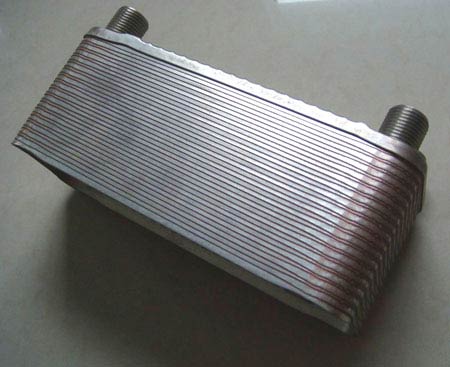 experimenting with, using an inexpensive Plate Heat
Exchanger- see TIPS
and TRICKS for details, it could save you the cost of a new tank.
experimenting with, using an inexpensive Plate Heat
Exchanger- see TIPS
and TRICKS for details, it could save you the cost of a new tank.
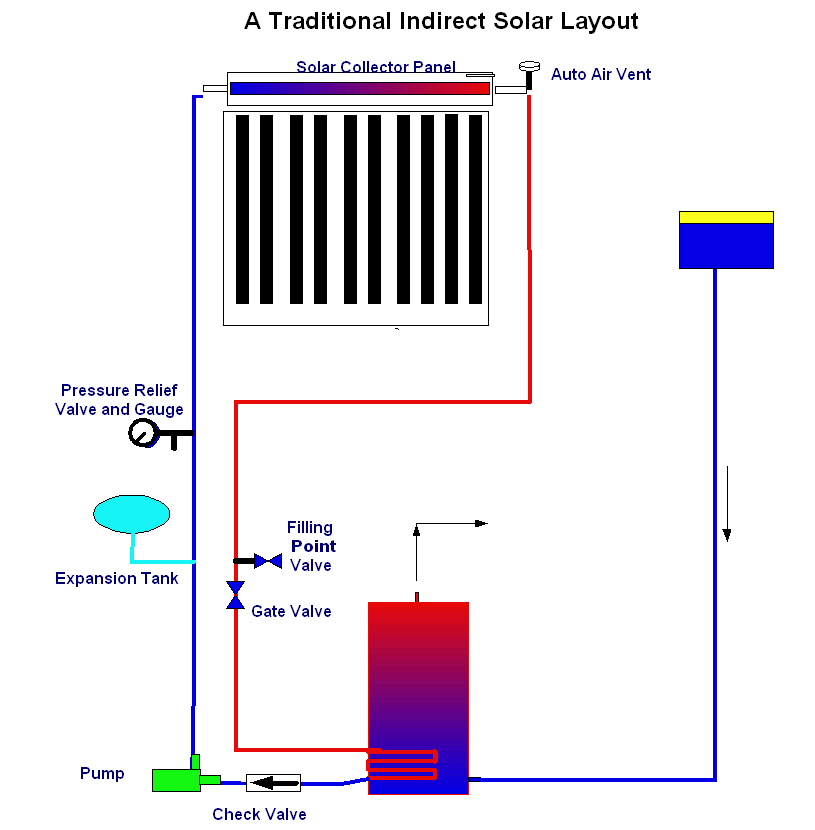 |
The Traditional Indirect Scheme operates at a pressure of around 1 Bar (15PSI). The pressure is kept constant using an Expansion Tank which allows for the expansion and contraction of the solar fluid as it heats and cools, with a Pressure Relief Valve which vents to atmosphere if the system rises above its pre-set limit of 3 Bar. The positive pressure prevents fluid boiling until it reaches say 120C, (but these temperatures are not normally seen in a healthy layout) The gate valve is used to adjust to optimum flow rates by restricting the aperture through which the flow passes. |
|---|
There is an inexpensive alternative layout that avoids the need for an Expansion Tank and Pressure Relief Valve or Gauge:
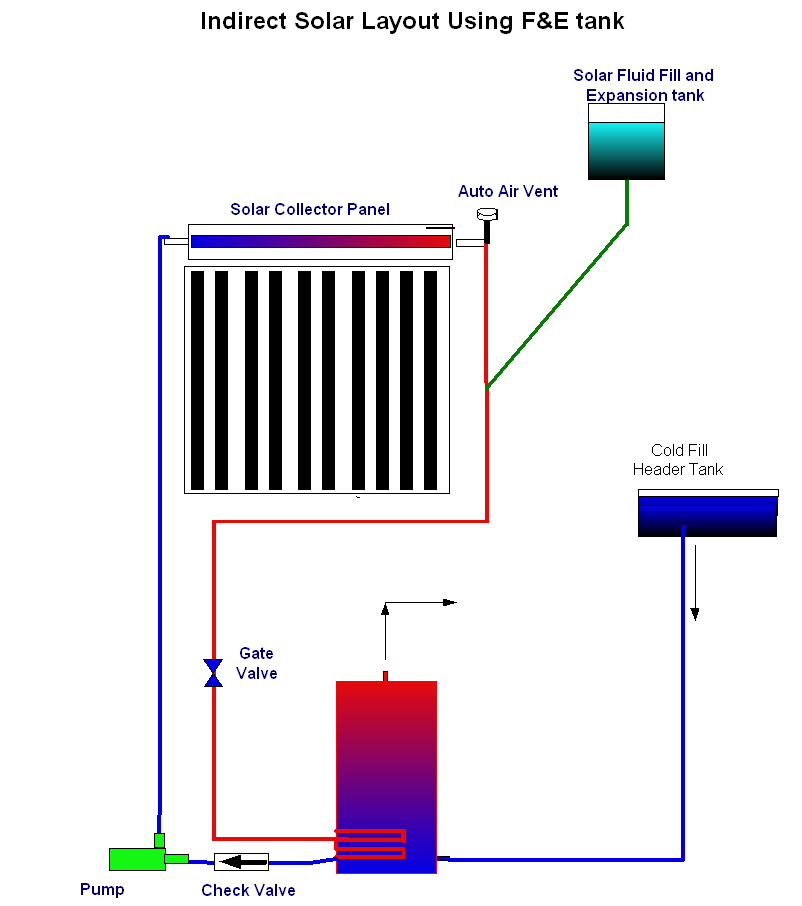 |
If you are able to locate a small header tank above the rest of the circuit, you can dispense with the additional 'pressure' components. The system is filled from this F&E (Filling and Expansion) tank and the small amount of fluid maintains a light positive pressure on the circuit. As the fluid heats, the expansion flows back in to the tank. The open topped F&E tank can be as small as 3 ltrs and some people have successfully used Car Radiator Expansion tanks from their local vehicle scrap yard. This delightfully simple approach works well and ensures there can never be a dangerous build up of pressure, even if the pump failed completely and the panel boiled under stagnation. |
|---|---|
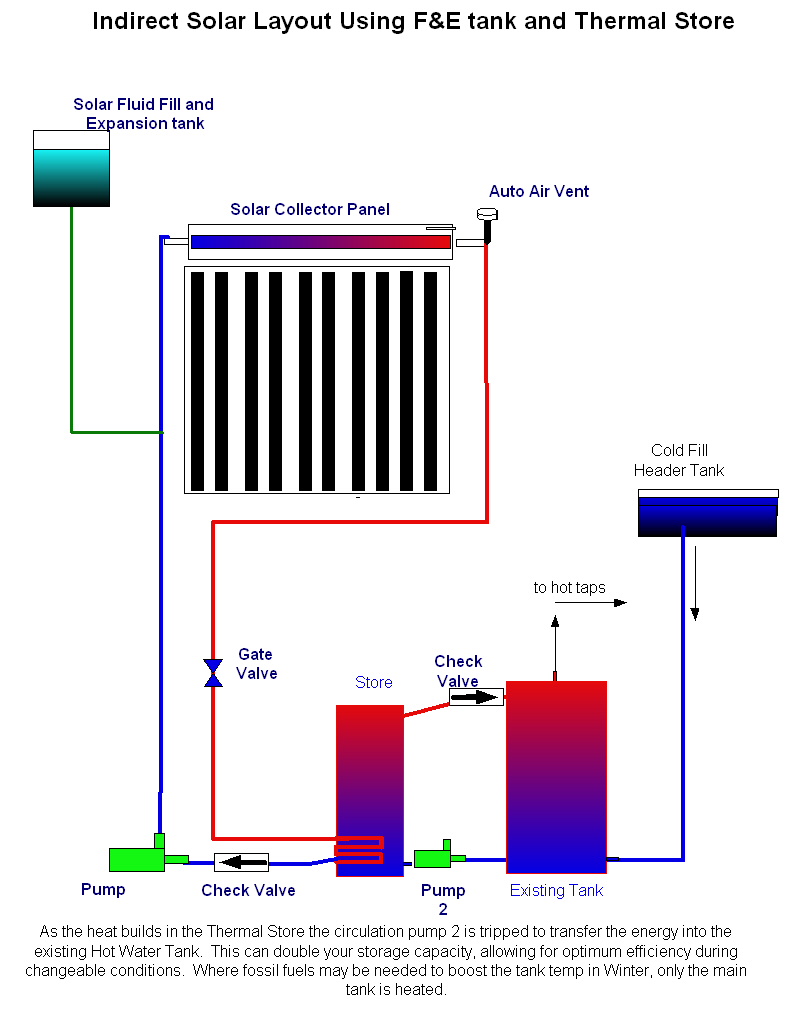 |
Adding a Second Tank -The Principles of the Thermal Store As a general rule, the more water you can store then the more efficiently you can exploit solar energy. Our climate is variable and energy can be stored on bright sunny days to assist on dull wet days. Where you do not have a suitable heat-exchanger coil in your existing tank and/or you wish to increase the capacity of your water storage, then adding a Thermal Store is an inexpensive solution. There are different ways of using a Thermal Store, with both Direct and Indirect layouts, but whichever method you choose the principle is the same. In this example, using a standard vented cylinder (loads second hand on ebay at around £30!) the solar flow is routed through the store's coil. The energy captured in the new 'Thermal Store' is pumped into the existing Hot Water Tank once the store becomes hotter than the main tank, using a small circulation pump like the SP20/20 shown on the products page. This water circulates between the two tanks to equalise the temperatures, thus doubling your overall storage capacity and enabling you to employ additional Solar Collectors. Thus the system's performance is further enhanced with its ability to ride through the dull days with the energy left over from earlier periods. Apart from being much cheaper, this can work even better than buying a new large solar tank, in that on those days in Winter when you need fossil fuels to boost your water temps you only have to heat the small existing tank. A typical domestic hot water tank is around 160 litres, so increasing this to 200 to 300 ltrs is more than enough for most families. |
__go to HOMEPAGE or here to go to PRODUCTS
end-